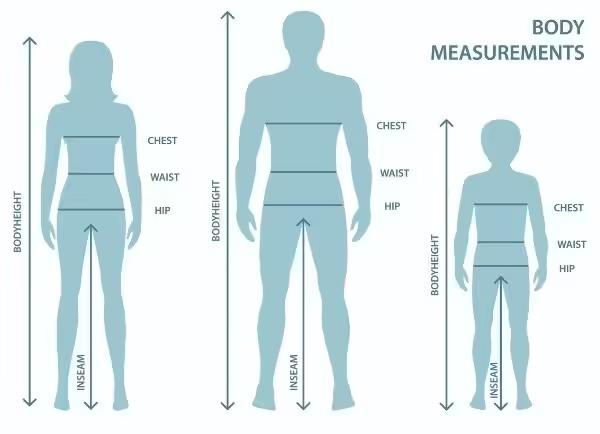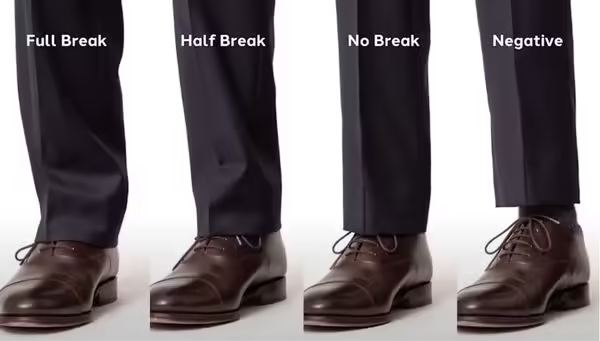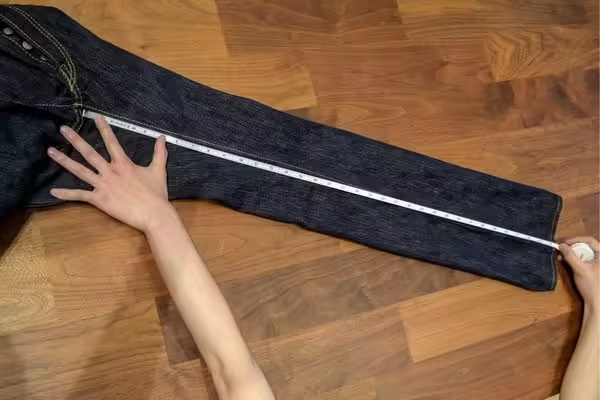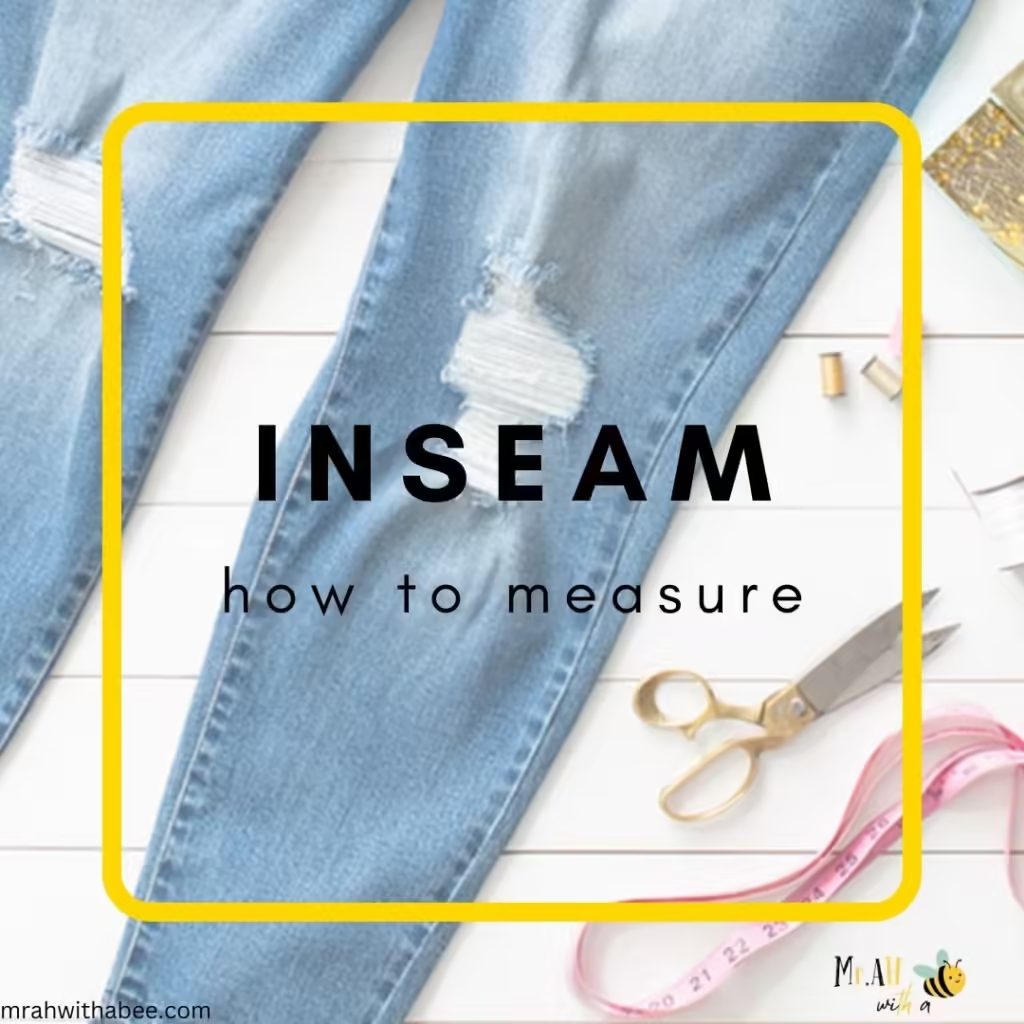The inseam is a crucial measurement for achieving the perfect fit in pants, shorts, and other legwear (Tights, Leggings, Chinos, Jeans shorts, and Trousers). The inseam is specifically the distance from the crotch seam to the ankle, which plays a significant role in determining how clothing fits and appears on the body. A well-measured inseam ensures that pants and shorts sit correctly on the legs, providing both comfort and style.
-
Fit and Comfort:
- The inseam directly influences how well a garment fits. If the inseam is too short, it can lead to an awkward, cropped look, while an inseam that is too long may cause the fabric to bunch up at the ankles. Proper measurement helps ensure that the clothing flatters the wearer’s shape and allows for ease of movement.
-
Style Considerations:
- Different styles of pants and shorts call for varying inseam lengths. For example, tailored trousers may require a longer inseam to maintain a polished appearance, while casual shorts might have a shorter inseam for a relaxed fit. Understanding one’s inseam helps in selecting styles that align with personal fashion preferences.
- Customization and Alterations:
- For tailors and seamstresses, knowing the correct inseam measurement is essential for making custom alterations. Whether shortening or lengthening pants, accurate measurements ensure that the final product fits the client perfectly, enhancing their overall satisfaction.
-
Online Shopping:
- In the era of online shopping, where trying on garments before purchase isn’t possible, knowing your inseam measurement becomes vital. It allows shoppers to make informed decisions when selecting sizes, reducing the likelihood of returns due to poor fit. Many online retailers provide sizing charts that include inseam measurements, making it easier to find the right fit based on personal dimensions.
Knowing how to measure your inseam accurately can benefit anyone, including shoppers seeking the right fit, tailors working on custom alterations, or those buying clothes online.
Understanding Inseam

The diagram above illustrates the correct starting and ending points for measuring different areas of your body. Many people mistakenly measure at the wrong locations, leading to inaccurate results. For instance, when measuring your waist, some individuals measure below the belly button, while your natural waistline is actually above it! Follow the simple instructions below to get accurate measurements for each body part:
Chest: Measure the circumference of your chest by placing one end of the tape measure at the fullest part of your bust. Wrap it around under your armpits, across your shoulder blades, and back to the front to obtain the measurement.
Waist: Measure your waist circumference by wrapping the tape around your natural waistline, which is located above your belly button and below your rib cage. To find your natural waistline, bend to the side; the crease that forms indicates where to measure. Avoid sucking in your stomach, as this will yield an inaccurate measurement. If you typically wear your clothing below your waist, take that measurement as well.
Hips: Measure the circumference of your hips by starting at one hip and wrapping the tape around your rear, across the other hip, and back to the starting point. Ensure the tape is positioned over the fullest part of your buttocks. Since keeping the tape level can be tricky, consider using a mirror for assistance.
The inseam refers to the inner length of a pant leg, measured from the crotch to the bottom of the ankle. This measurement determines the length of the pants and how they will fall on the legs. It influences comfort and style, especially when shopping for different types of legwear like jeans, dress pants, or shorts. An accurate inseam measurement ensures the pants won’t be too short, too long, or uncomfortable.

Tools Needed for Measuring
To measure your inseam correctly, you’ll need the following tools:
- Measuring Tape: Use a flexible measuring tape for the best accuracy.
- Flat Surface: Stand on a flat surface for stable measurement.
- Pencil and Paper: To note down the measurements.
- Optional: A friend to assist, especially for more accurate results.
Steps to Measure Inseam

For Men
- Prepare for Measurement: Wear fitted clothing, like tight-fitting shorts or barefoot.
- Stand Straight: Keep your feet shoulder-width apart (like when you take the position to perform squats in the gym) and stand upright.
- Locate the Crotch Point: This is where the legs meet.
- Measure from the Crotch to Ankle: Run the measuring tape down the inside of your leg to the desired length, usually at the ankle.
- Record the Measurement: Write down the inseam in inches or centimeters.
For Women
- Prepare for Measurement: Wear leggings or similar fitted clothing for accuracy.
- Stand Straight: With feet shoulder-width apart and stand upright.
- Locate the Crotch Point: This is where the legs meet.
- Measure from the Crotch to Desired Length: Measure down to the ankle (for pants), or higher for capris (3/4th) or shorts.
- Record the Measurement: Note the measurement for future reference.
Tips for Accurate Measurement
- Ensure the Tape is Straight: Avoid twisting or bending the measuring tape.
- Keep the Tape Snug: Press it gently against the leg, without pulling too tight.
- Measure Both Legs: Some people have slightly different leg lengths.
- Double-check the Measurement: Repeat the process for accuracy.
Common Inseam Lengths
Inseam lengths differ based on the style of pants:
- Jeans: Typically range from 28 to 36 inches.
- Dress Pants: Often range from 30 to 34 inches.
- Shorts: Vary between 5 and 12 inches.
Fashion trends and individual preferences may also influence inseam choices. For example, cropped jeans may have shorter inseams, while formal pants may be tailored to different shoe heights.
Adjusting Inseam Measurements
Adjustments might be necessary to get the desired length:
- For High Heels: Add an inch or two to the inseam.
- For Flat Shoes or Barefoot: Use the original measurement.
- Tailoring Options: Consider professional alterations if the inseam length isn’t perfect.
Conclusion
Measuring your inseam ensures a better fit for all pants, shorts, and legwear types. Whether buying clothing online or seeking tailored outfits, knowing your inseam helps make better choices. Take your time to measure accurately, and don’t hesitate to adjust the measurements to suit your needs.
FAQs
- What is the inseam for men’s pants?
- The inseam for men’s pants typically ranges from 28 to 36 inches, depending on style and preference.
- How do I measure the inseam for women’s jeans?
- Measure from the crotch to the desired length, usually the ankle for full-length jeans.
- Can I measure the inseam by myself?
- Yes, but having someone assist can improve accuracy.
- Does the inseam affect the fit of the shorts?
- Yes, the inseam length determines how short or long the shorts will be.
- How do I know if my inseam is too long?
- Pants may bunch up at the ankles or drag on the floor.
- How does inseam differ between men and women?
- Women’s inseams may vary based on fashion, while men’s are often consistent.
- Can I alter the inseam length of the pants?
- Yes, a tailor can adjust the inseam to your desired length.
- What if I have different leg lengths?
- Measure both legs and use the longer measurement for a better fit.
- Is the inseam the same as the outseam?
- No, the inseam measures the inner leg, while the outseam measures the outer leg.
- Can inseam affect comfort during exercise?
- Yes, an appropriate inseam length can prevent chafing and improve mobility.
Thank you for reading, for more interesting articles visit our homepage.



